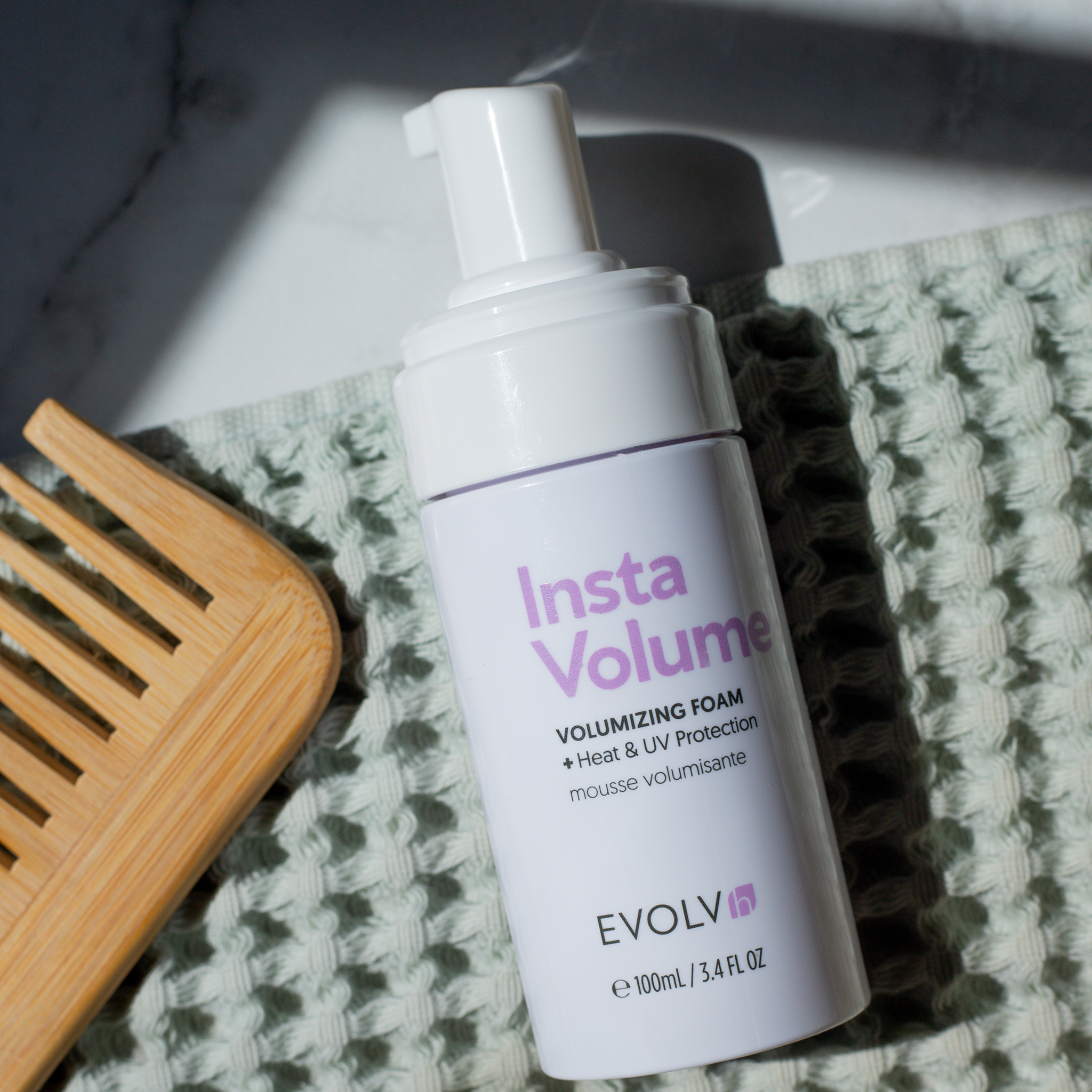How To Determine Your Hair Type

It’s no secret that not everyone's hair type or curl pattern is the same. There are endless combinations—straight to curly, thin to thick, or something in between. While genetics play a role, factors like environmental changes, hot tools, chemical treatments, stress, medications, and nutrient deficiencies can influence your hair type. It's completely normal for your hair to evolve (pun intended) over time!
Every hair journey is unique, and we're here to help you achieve your hair goals. Take our HAIR QUIZ for a personalized haircare routine!
Wondering which hair type you have? We'll go over each one in detail to help you get started on your amazing healthy hair journey!
Different Hair Types: Which One Do You Have?
There are four main hair types. Your hair falls into one of these categories. For each category, there are three sub-categories that specify your hair texture. A hair type chart can help you determine what your curl pattern looks like.
Hair Type 1: Straight
- 1A: Fine, completely straight with no waves
- 1B: Medium-thick, straight
- 1C: Thick, straight, may contain a few slight S-waves
Hair Type 2: Wavy
- 2A: Fine, loose S-waves
- 2B: Medium-thick, more defined waves
- 2C: Thick, deep waves
Hair Type 3: Curly
- 3A: Big, well-defined curls
- 3B: Stretchy, ringlet curls
- 3C: Tight, corkscrew-shaped curls
Hair Type 4: Coily/Kinky
- 4A: Tight coiled S-shaped curls
- 4B: Tight coiled Z-shaped curls
- 4C: Tightly coiled, less defined curls
Tips for Taking Care of Each Hair Type

Straight Hair
-
Use a lightweight shampoo and conditioner to avoid weighing down the hair, our UltraShine Moisture Shampoo and Conditioner is weightless, cleanses without stripping, and nourishes strands from within.
- If you struggle with your fine, flat, or hair that gets oily way to quickly, our InstaVolume Cleaning Treatment and Elixir Duo will absorb excess oil and help you extend time between washes.
-
Limit heat styling and use a heat protectant when necessary. Lucky for you, each our our smart leave-in conditioners and stylers protect against heat.
-
Incorporate a volumizing mousse for added body.
-
Regularly trim the ends to prevent split ends and maintain a healthy appearance.
Wavy Hair
-
Use a moisturizing shampoo and conditioner like our Healthy Curls Trio for waves and curls to enhance the natural wave pattern.
-
Apply a leave-in conditioner to keep the waves defined and frizz-free.
-
Embrace air-drying or use a diffuser to enhance the natural texture.
-
Use a clean styler like our WonderBalm or DreamGel to add definition, control-frizz, and add shine
-
Treat your wavy strands to a deep conditioning treatment like our UltraRepair Reconstructing Masque once or twice a week to keep them happy, hydrated, and nourished.
- When detangling wet hair, use a wide-tooth comb or your fingers to gently work through knots. This helps prevent breakage and keeps the natural wave pattern intact.
Curly Hair
-
Curly hair is more likely to get frizzy than those with waves. It’s important for your hair to have plenty of moisture and hydration. Our Healthy Curls Trio was made just for you! Shea butter, castor seed oil, kiwi seed oil, and other nourishing ingredients care for your curls from root to tip.
-
Try the plopping technique to enhance your curls. After applying products, gently wrap your hair in a microfiber towel or an old cotton t-shirt to encourage curl formation and reduce frizz.
- Use a diffuser attachment when blow-drying to minimize frizz and enhance your curls' shape. Opt for a low or medium heat setting to avoid heat damage.
- Experiment with different products to find the ones that enhance your curl pattern and provide the desired hold like our WonderBalm, DreamGel, SuperCurl Defining Cream
- For more definition, try finger-coiling individual curls while applying styling products. This helps shape and define each curl for a more polished look
Coily Hair
-
Coily/kinky hair is the most delicate and fragile hair type. You’ll want to be extra gentle with your hair so it doesn’t lead to any damage.
- Use a moisturizing shampoo and a deep conditioner to nourish and hydrate the hair. Our Healthy Curls Trio was made just for you! Shea butter, castor seed oil, kiwi seed oil, and other nourishing ingredients care for your curls from root to tip.
- Apply a leave-in conditioner to keep your coils well-hydrated, defined, and protected. This helps maintain moisture levels and reduces frizz.
-
Using a deep conditioning masque is key to having moisturized hair that will nourish your precious strands.
- Detangle your hair using your fingers or a wide-tooth comb when wet. Start from the tips and work your way up to the roots to minimize breakage.
- Sleep on a silk or satin pillowcase to reduce friction and prevent breakage. Alternatively, use a silk or satin scarf or bonnet to protect your coils during the night.
- Protect the hair at night by using a satin or silk bonnet or pillowcase to retain moisture.
Knowing your hair type is important because it gives you a better understanding of how to care for your specific hair needs.
Remember, each hair type is unique, and it's important to experiment and find what works best for your specific hair. Don't be afraid to try different products and techniques to achieve healthy, beautiful hair!
Feeling overwhelmed on how to care for your natural hair type? Tap HERE to take our quick hair quiz! We love creating and sharing products that help you achieve your #hairgoals, and it brings us joy to see the positive impact they have on your hair health!
Here’s to more good hair days and celebrating the beauty of your hair today and every day 💫🌟



